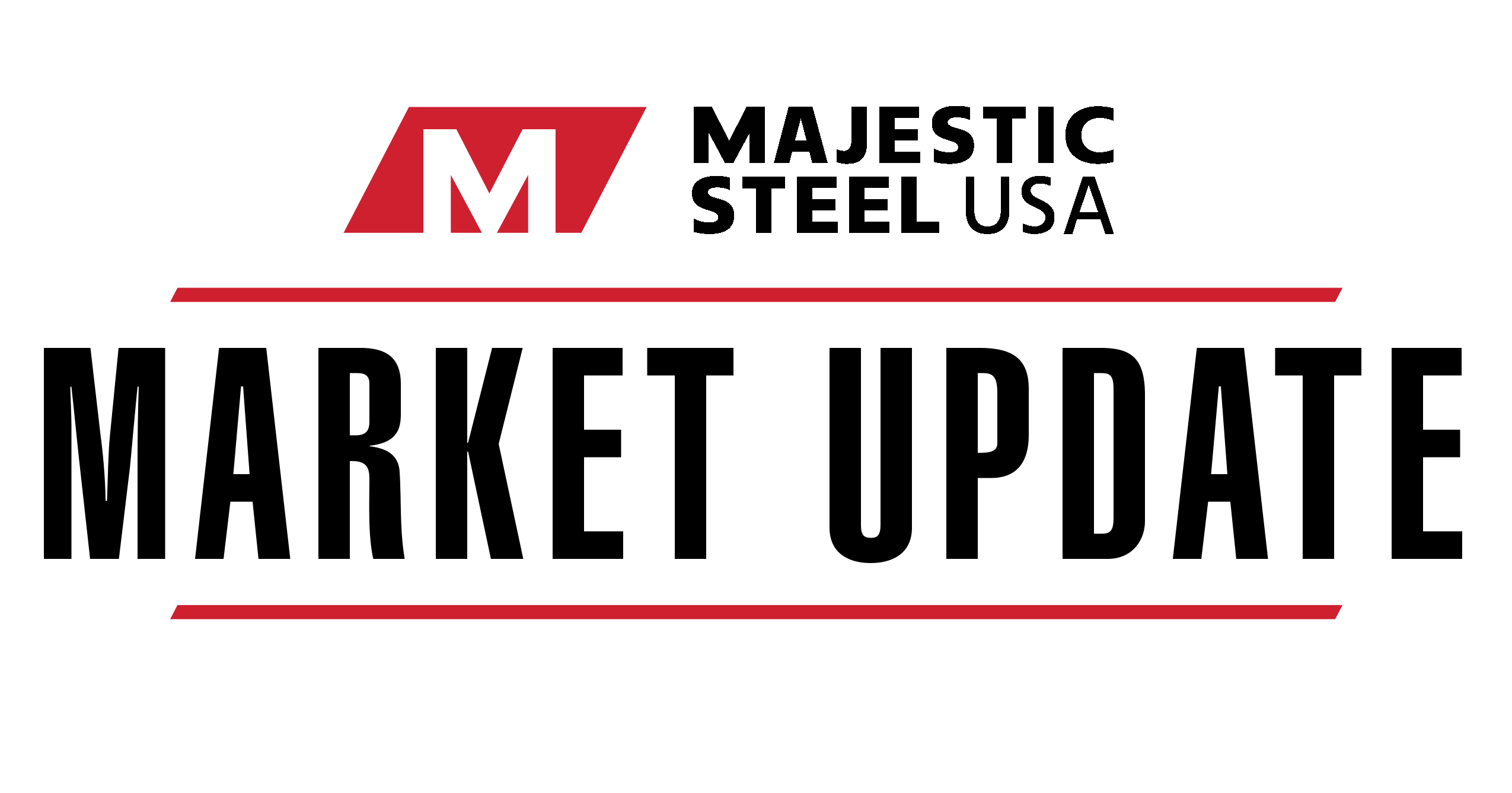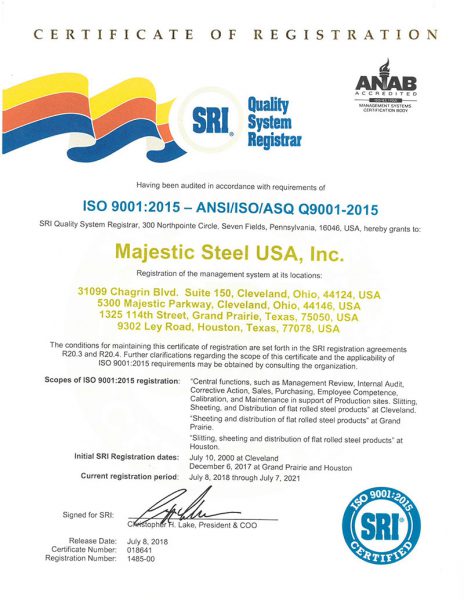Market Update | March 19, 2025
INDUSTRIAL PRODUCTION INCREASED IN FEBRUARY
Industrial production increased 0.7% from January and is at its highest level in recent history. Manufacturing output increased 0.9% from January to a two and a half year high. Manufacturing output was boosted by a sharp 8.5% increase for motor vehicle/part production. Excluding motor vehicle/part production, manufacturing output increased 0.4%. Durable goods manufacturing index increased 1.6% while nondurable goods manufacturing increased 0.2%. Capacity utilization for manufacturing increased 0.6% to 77.0%, while up the current rate is 1.2% below its 50-year average.
PRICE
The recent upward momentum for domestic sheet pricing slowed this week. While CRC and HDG pricing continued to push higher, HRC pricing was virtually flat this week.
- Increased buying activity, uncertainty around offshore sourcing, and rising costs, particularly from scrap, continue to add fuel to the current market upswing.
Input Costs
Zinc pricing was up this week, now up for the second consecutive week.
- Pricing came in at $1.32/lb this week after briefly hitting a YTD high early in the week.
Spot iron ore pricing increased slightly this week but remains in the very tight range we have seen for the past five weeks.
- The current price, $102/mt, is up from $101/mt last week.
Coking coal pricing was down again this week, sliding to $168/mt from $180/mt last week.
- Prices are down 3.3% from last week and down 11.4% from this time last month.
- Current coking coal pricing is at its lowest level since early on in the pandemic
SUPPLY
U.S. raw steel production slipped last week after a sharp increase last week.
- U.S. steelmakers produced 1.667 million tons at a 74.9% utilization rate; down from 1.671 million tons previously.
- This is down slightly from the highest weekly output in a month seen a week ago.
- Production was down 0.2% from last week but was down 2.7% from the same week last year.
- YTD production is down 1.3% from the same timeframe last year.
DEMAND
Confidence among U.S. homebuilders continued to slide in March and is now matching its lowest level since December 2023.
- The March Housing Market Index came in at 39, down from 42 in February and a recent high of 47 in January.
- Any reading below 50 shows a pessimistic outlook, while any reading above 50 shows increased optimism.
- While both the present situation and the next six-month outlook component remained below 50, they moved in opposite directions.
- The present situation slipped 3 points to 43, while the next six months’ outlook increased 1 point to 47.
- The traffic component continues to lag, sliding to 24 in March.
- Tariff uncertainty, increased construction costs, and general economic uncertainty negatively impacted the index in March.
New residential construction rebounded in February after starting off the year on a slow note.
- February new housing starts came in at a 1.501 million unit rate, up 11.2% from January, but still down 2.9% compared to the 1.546 million unit rate in February 2024.
- This marks the sixth consecutive month in which starts were down on a year-over-year basis.
- Starts increased for both single-unit and multi-family units in February, with single-unit starts hitting its highest monthly rate since last February.
- YTD starts are now down 2.9% compared to the same timeframe last year but are up 2.3% compared to the first two months of 2023.
- Permits, an indicator for future construction, slipped for the third consecutive month in February, sliding 1.2% to a 1.456 million unit rate.
- Permits were down 6.8% from last February and are at their lowest level since October.
Business activity in the manufacturing sector in New York dropped sharply in March.
- The March Empire Manufacturing Index fell more than 25 points to -20.0 from 5.7 in February.
- The two-month average declined to -7.2, the lowest level since June.
- Any reading below 0.0 shows contraction, while any reading above 0.0 shows expansion.
- Both the new orders and shipment components declined in March, sliding to -14.9 and -8.5, respectively.
- Survey respondents continued to grow less optimistic about the future outlook in March.
- After dropping by 15 points in February, the index for future business activity fell another 10 points to 12.7.
- Capital spending plans slowed again in March, slipping to 9.2 from 10.9 in February.
Industrial production increased in February, climbing 0.7% from January and is at its highest level in recent history.
- Manufacturing output increased 0.9% from January to a two and a half year high.
- Manufacturing output was boosted by a sharp 8.5% increase for motor vehicle/part production.
- Excluding motor vehicle/part production, manufacturing output increased 0.4%.
- Durable goods manufacturing index increased 1.6% while nondurable good manufacturing
increased 0.2%. - Capacity utilization for manufacturing increased 0.6% to 77.0%, while up the current rate is 1.2% below its 50-year average.
ECONOMIC
February retail sales increased after a sharp decline in January.
- February retail sales came in at a $722.7 billion rate, up 0.2% from January and up 3.1% from $700.9 billion rate in February 2024.
- This was the lowest y/y increase since October.
- Excluding the volatile sales from gas stations, sales came in at a $669.9 billion rate, up 0.3% from January.
- The largest m/m increases in February came from health & beauty stores, online retailers, and grocery stores.
- The sharpest declines came from department stores, restaurants/bars, gas stations, and motor vehicle dealers.
- YTD actual total sales are now up 1.8% compared to the first two months of 2024.
This material, information and analyses (the “Content”) may include certain statements, estimates and projections prepared with respect to, among other things, historical data and anticipated performance. Content may reflect various assumptions by Majestic Steel USA, Inc. concerning anticipated results that are inherently subject to significant economic, competitive and other uncertainties and contingencies and have been included for illustrative purposes. Content is provided AS-IS.

